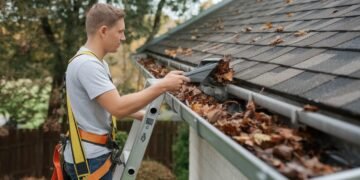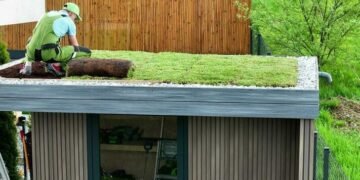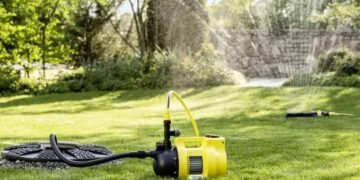Building a rooftop garden is a great way to utilize scarce space to get the benefits of plants. In most localities, some form of rooftop garden is permissible, although you do have to follow local rules.
Here is some advice to make sure your rooftop garden is a success from the moment you put your first plant into place.
Verify Load Capacity
Either discuss your roof garden plans with a roofing contractor, find documentation regarding your roof’s load capacity or calculate it yourself, but make sure your roof can handle the load you want to put on it. Too much weight can harm your roof structurally and lead to other issues, including sagging and, in the worst case, collapse.
In most cases, the weight of the soil and containers you need will not exceed or even come close to your roof’s load capacity, but you want to ensure that is the case. You do not want to find out after the fact that your roof was overloaded.
Check Building Codes and Other Rules
The next step is to check your local building codes, HOA rules, and other regulations to ensure you can even construct a roof garden. Some communities are weird about what they allow on roofs, and while you might think your plants are beautiful, in the eyes of a governing authority, they are an eyesore.
Remember that most rules have a purpose that likely was in response to an issue or the potential of an issue at some point in the past. Always try and figure out why a rule exists, and then you can more easily figure out a workaround.
Document Sun Exposure
How much direct and indirect sunlight your roof gets will play an important role in planning your rooftop garden. For example, if your roof gets direct sunlight for most of the day, you want to select sun-friendly plants. You also want to avoid plants that suck up a lot of moisture from the soil, as that type of roof will dry out fast.
Document Wind Exposure
Figuring out the average wind exposure is important as well. Big, leafy plants do not do well in windy environments because their leaves get shredded. If your rooftop garden is a year-round affair, larger leaves will be prone to “winter burn” when things cool down. You want your plants to sustain extensive exposure to the wind for as long as your garden is active.
Plan Your Water Source
Water will be vital to your rooftop garden plants. Make sure you can run a hose from the ground up to them, collect rainwater in a barrel (check local ordinances regarding water collection as barrel collecting of water is illegal in some places,) or have some other water source.
Draw It Out
After considering all the “logistics” of your rooftop garden, the next step is to map out your plot. Even if you have only a few planters, you want to ensure they are strategically positioned to make the best use of sun, water, and space. Mapping out what you will be planting will also help you figure out what plants will work well on your roof and what plants are best left on the ground.
Build a Windbreaker
Until your plants take hold and acclimate to your rooftop environment, wind protection is key. Shading plants from direct sunlight is fairly easy, but protecting them from the wind can be challenging. To help defeat that challenge, you should build a windbreaker. The best way to break up the wind is tree-like plants, but if that is not possible, a trellis will work.
Position the trellis in the area where the wind is most intense, in front of any plants. A simple trellis will go a long way to breaking up the onslaught of wind and will usually be enough to protect your plants.
Choose Sun, Drought, and Heat Tolerant Plants
When choosing your plants, verify that they are sun, drought, and heat tolerant. You do not want to spend the time setting up and planting only to have your plants die off because they are not suited to the environment.
Buy Native Plants
A good rule of thumb is to buy native plants that do well in the sun. Native plants can fight off local diseases more readily and have built natural defenses for many resident pests, so the stress of heat or little water will not overwhelm them as easily. Nonnative plants will face an onslaught of alien menaces, and the more you reduce them, the better and easier.
Final Word
Once you have covered the basics listed here, you can proceed with planting, watering, some weeding, and other chores that will make your rooftop garden an oasis. Covering all these points, however, is vital to ensure your rooftop garden thrives from minute one.
Recommended Posts:
















